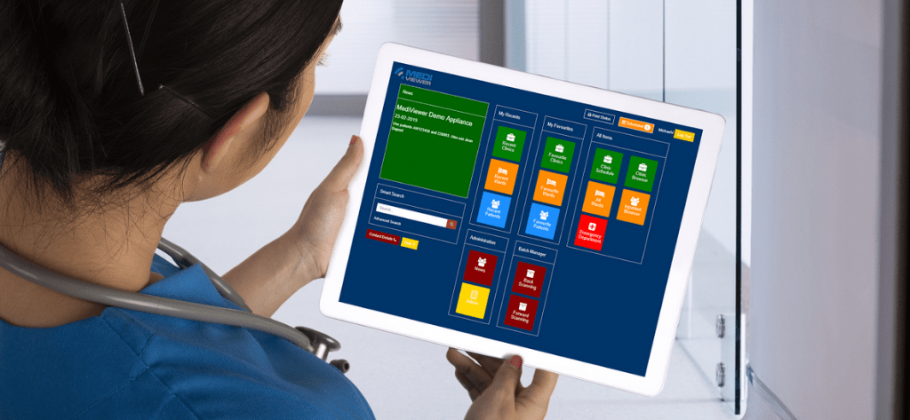Linda Watts, GDE Programme Manager & Head of Health Records at Imperial College Healthcare NHS Trust, shares the Trust’s paperless journey to date, and explains how deploying an electronic document management system (EDMS), has resulted in reduced costs and faster patient care.
Imperial provides care for around a million people over five hospital sites across north-west London every year, and the Trust has a long track record in research and education, influencing clinical practice nationally and worldwide.
The digitisation of paper health records is a challenge that every healthcare organisation has to face as it moves towards greater use of digitised workflows and electronic access to patient records.
As the NHS moves towards greater digitisation of processes, we all go through an awkward period of hybrid working, where we’ve got to marry old paper-based processes with new digital ones. In addition to our new electronic patient record (EPR), there is a huge legacy of paper-based patient records, many of which remain critical to care as we digitise. The longer this hybrid working continues, the more challenging it becomes to the whole programme of digital working within our hospitals.
I joined Imperial in 2016 as the Head of Health Records, and my main remit was to manage the complete digitisation of the Trust’s patient records. It soon became apparent that we were spending around £500,000 per year – far too much – on storing paper. We also had three main record libraries that were occupying prime floor space. These were mainly records of active patients: anyone who had had an appointment in, say, the past 18 months.
We had in the region of one million records in total on-site. We also had 113 records staff to manage these libraries across all locations, as well as the continual movement of files around our hospitals and regular interaction with our offsite store for all other records that were located there.
This came to about 111,661 boxes of physical records, with each box holding an average of 12 sets of records each. That’s in the region of 1.3 million records offsite, with around 150 pages per record on average. That’s more than 350 million pages in total to scan. Our plan is to scan the first 500 thousand records, around 75 million pages, including all on-site records, and then review and work out the best process for handling the remainder of our archive after this period. As we achieve more clinical adoption with our electronic systems the need to scan more of these notes may subside over time.
I knew there must be a more efficient way to store our offsite records, and my instinct was confirmed when I reached out to Xerox for advice. I’d worked with Xerox during my time at another Trust, and they really stood out for their responsiveness and care, as well as their knowledge about document digitisation.
With their expertise to back me up, we moved from box-based to open-rack storage.
In the summer of 2019, we will begin using MediViewer by IMMJ Systems. MediViewer’s primary goal is to enable hospitals to scan, index and archive paper medical records and access them quickly through an intuitive user interface. It is fully integrated with our Cerner EPR, and provides a complete view of a patient’s health record. In fact, MediViewer is integrated to the point where not only are patient records loaded in full patient context, but with an embedded window from within our Cerner EPR.
For Imperial, IMMJ Systems MediViewer EDMS was the best solution offered in terms of value, speed, functionality, ease of use, mobility, and technical architecture, coupled with the company’s ability to support our change and transformation needs. It’s a software-as-a-service system, which we specifically wanted because it avoids infrastructure investment and is natively designed for scalability and ease of access. It’s accessible via our HSCN networks and is hosted by UKCloud, a specialist provider of hosting services to the UK public sector. So it meets our security and data sovereignty requirements. In fact, when we complete the first phase of scanning, the MediViewer EDMS will host the most amount of scanned digital records from a cloud-based platform in the UK.
Why do we need an EDM?
When we started this paperless journey, we were driven by the fact that implementing MediViewer equated to less than the price of storage for our records over the course of five years, but also provided a unique and intuitive platform for our clinical and non-clinical users to retrieve and access records.
We were not initially focused on the additional features and functionality that an EDMS can provide to clinicians. I was actually told time and time again by some of our clinical staff that we didn’t need an EDMS, and that there is no value in what we are scanning.
Today, however, we can see that the case for investment in an EDMS solution is compelling to clinical staff. It can offer significant improvements in operational efficiency, and improve decision making, as well as associated cash-releasing benefits.
We’ve had very positive feedback from our clinicians. The technology is intuitively easy to use and its speed means response time between pages is almost instantaneous. It provides a greater oversight of case notes, regardless of location, ensuring that the documents can be found easily.
Our ambition at Imperial is to get to zero paper records. We have a five-year strategy to achieve this and we’re now very confident about our progress.
We are currently deploying MediViewer, with a planned go-live date of mid-July.
At the next Healthcare Partnership Network, taking place on the 16th and 17th July, at Oulton Hall in Leeds, Linda will be sharing the paperless journey to date of Imperial College.











